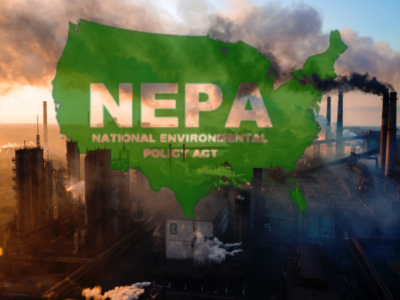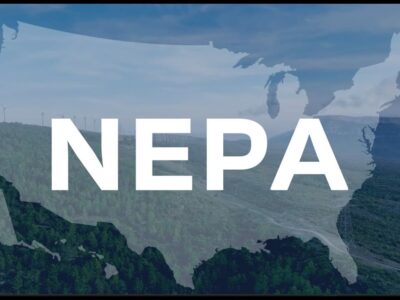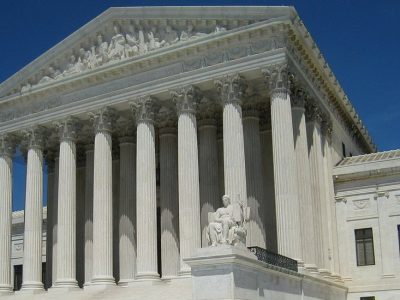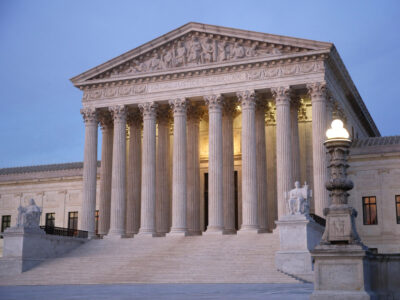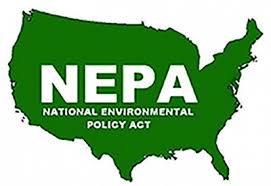environmental impact statements
NEPA Update: The Other Shoe Drops
A New D.C. Circuit Case reads the Seven County decision for all it is worth.
Based on the facts as set forth by the D.C. Circuit, its decision in the Tennessee Pipeline case may have been right. But the opinion went astray with its unrestrained enthusiasm for deference in NEPA cases, and its assumption that the same rules carry over in reviewing decisions under other statutes like the Natural Gas Act.
CONTINUE READINGReinventing NEPA
What do we really want NEPA to do? And what’s the best way to do it?
Imagining reform legislation from Congress is difficult, but it’s worth imagining, if only as a thought experiment, how we could do better. I would suggest we start by asking what we can expect NEPA to accomplish after fifty years of judicial decisions and agency practice – and whether there are better ways of accomplishing those things.
CONTINUE READINGHouse Natural Resources Committee Holds Hearing on Another Ill-Conceived Permitting Reform Bill
The SPEED Act takes aim at the scientific foundation of environmental review
The proposed iSPEED bill includes provisions that would fundamentally compromise the integrity of federal decision making processes by allowing—or even compelling—the government to ignore scientific and technical information critical to understanding the effects of a federal action and how those effects could be mitigated.
CONTINUE READINGNEPA in the Supreme Court: The Seven Counties Oral Argument
Some arguments surfaced in the discussion that the Court would do well to ignore.
Several arguments popped up in the Supreme Court’s discussion of a major NEPA case that appealed to at least some of the Justices. We think that they would do well to rethink them. Each of the arguments distracts attention from what ought to be the key question: what impacts should the agency take into account in making its decision? We hope, when it comes time to draft opinions, the Justices will think through the arguments a little more fully and head in a different direction.
CONTINUE READINGNEPA in the Supreme Court — On the Eve of Oral Argument
Some thoughts about how the Court should define some limits on indirect effects.
Our paper on the proper scope of NEPA places heavy emphasis on foreseeability, but in an expanded version of the paper we consider some unusual situations where additional factors come into play. This additional analysis makes clear important limits on NEPA scope that we think address at least some of the concerns that have (appropriately) been raised about ever-expanding NEPA review and the risk that it will hamper efforts to develop needed infrastructure.
CONTINUE READINGNEPA in the Supreme Court (Part IV)
Understanding how causation applies for NEPA reviews.
This functional approach is consistent with Supreme Court precedent, based on the text and purposes of NEPA, and provides workable guidelines for agencies to determine what kinds of effects to examine when conducting environmental reviews. It is the approach the Court should follow when deciding Seven Counties, and when giving guidance to lower courts and agencies about how to apply NEPA.
CONTINUE READINGThe 2023 NEPA Rewrite and the Supreme Court’s New Climate Case
NEPA isn’t a common law subject. What the statute says matters more than pre-2023 judicial opinions.
When it amended NEPA in 2023, Congress squarely rejected language that would have constricted the definition of environmental impacts. The Supreme Court needs to give that language full effect, not obsess about the meaning of pre-2023 judicial opinions.The Supreme Court shouldn’t give advocates of narrowing NEPA a victory that they were unable to get through the legislative process.
CONTINUE READINGWill the NEPA Amendments Speed Up Permitting?
Probably not much. If at all.
I’ve blogged quite a bit about the challenges of interpreting the NEPA amendments, which snuck through as part of last year’s debt ceiling bill. I haven’t said much about their impact. Given the amount of energy infrastructure we need to build in the near future, a streamlined permitting process would be great. Alas, I don’t …
Continue reading “Will the NEPA Amendments Speed Up Permitting?”
CONTINUE READINGThe Statutory EIS Process: A Primer
Last year, Congress tried to codify NEPA law. Here’s how the process is supposed to work.
Because NEPA’s discussion of environmental impact statements (EIS) was very brief, the requirements and procedures were elaborated by courts and guidance from a White House office. That changed in 2023, because much of the subject is now covered explicitly by new statutory language.. Thus, NEPA is a bit less of a “common law” subject than …
Continue reading “The Statutory EIS Process: A Primer”
CONTINUE READINGFinetuning the New NEPA Rules
CEQ’s proposal is good, but it could be made even better.
In Monday’s post, I praised the CEQ’s proposed new NEPA regulations. They should streamline the process without compromising protection of the environment or environmental justice. I do have some suggestions for improvement, however, which are detailed below. Beyond my specific suggestions, I also hope that CEQ would view the new NEPA regulations as the beginning …
Continue reading “Finetuning the New NEPA Rules”
CONTINUE READING



